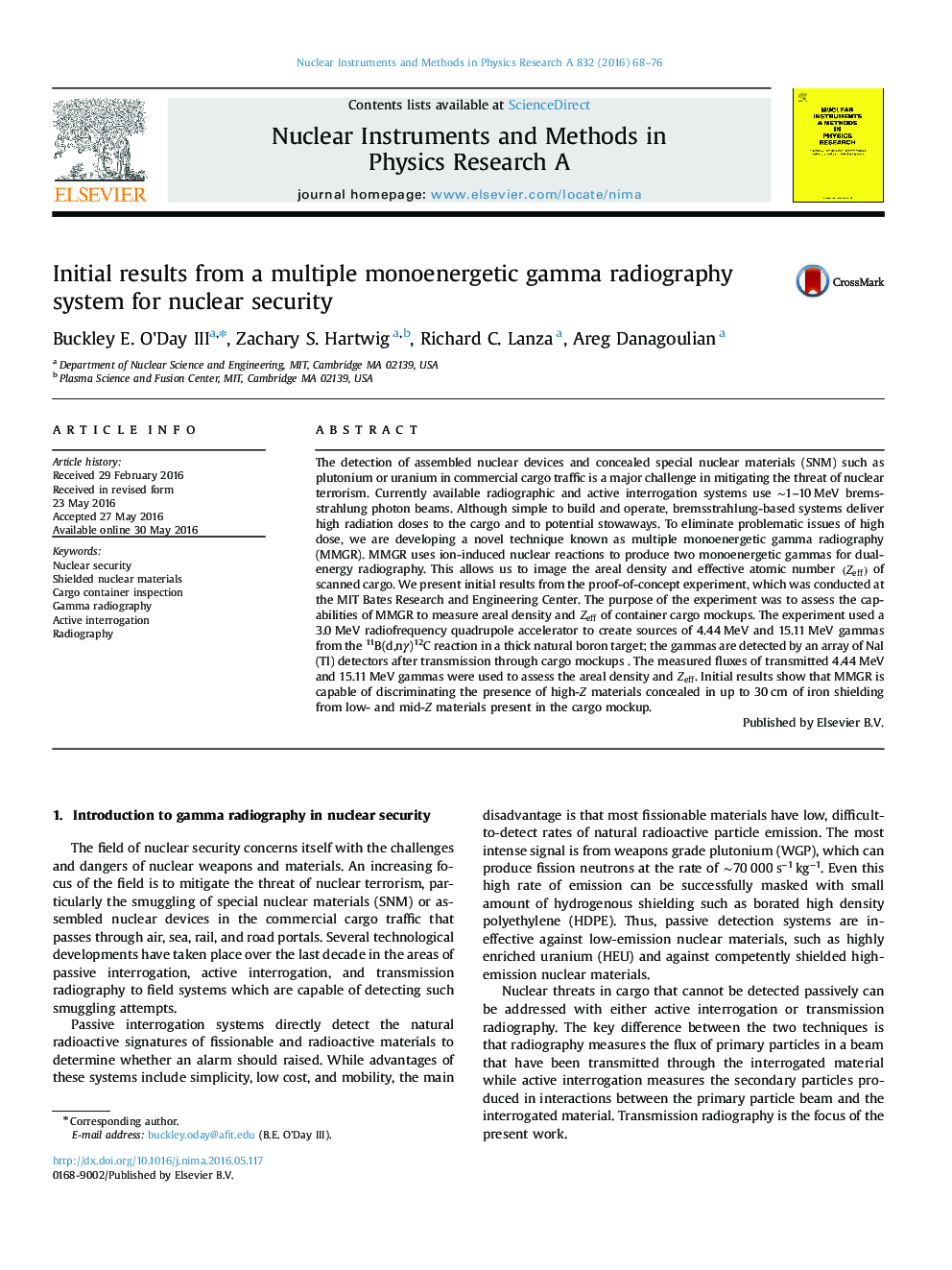| Article ID | Journal | Published Year | Pages | File Type |
|---|---|---|---|---|
| 8168522 | Nuclear Instruments and Methods in Physics Research Section A: Accelerators, Spectrometers, Detectors and Associated Equipment | 2016 | 9 Pages |
Abstract
The detection of assembled nuclear devices and concealed special nuclear materials (SNM) such as plutonium or uranium in commercial cargo traffic is a major challenge in mitigating the threat of nuclear terrorism. Currently available radiographic and active interrogation systems use â¼1-10 MeV bremsstrahlung photon beams. Although simple to build and operate, bremsstrahlung-based systems deliver high radiation doses to the cargo and to potential stowaways. To eliminate problematic issues of high dose, we are developing a novel technique known as multiple monoenergetic gamma radiography (MMGR). MMGR uses ion-induced nuclear reactions to produce two monoenergetic gammas for dual-energy radiography. This allows us to image the areal density and effective atomic number (Zeff) of scanned cargo. We present initial results from the proof-of-concept experiment, which was conducted at the MIT Bates Research and Engineering Center. The purpose of the experiment was to assess the capabilities of MMGR to measure areal density and Zeff of container cargo mockups. The experiment used a 3.0 MeV radiofrequency quadrupole accelerator to create sources of 4.44 MeV and 15.11 MeV gammas from the 11B(d,nγ)12C reaction in a thick natural boron target; the gammas are detected by an array of NaI(Tl) detectors after transmission through cargo mockups . The measured fluxes of transmitted 4.44 MeV and 15.11 MeV gammas were used to assess the areal density and Zeff. Initial results show that MMGR is capable of discriminating the presence of high-Z materials concealed in up to 30 cm of iron shielding from low- and mid-Z materials present in the cargo mockup.
Related Topics
Physical Sciences and Engineering
Physics and Astronomy
Instrumentation
Authors
Buckley E. III, Zachary S. Hartwig, Richard C. Lanza, Areg Danagoulian,
